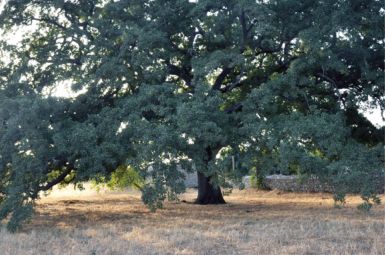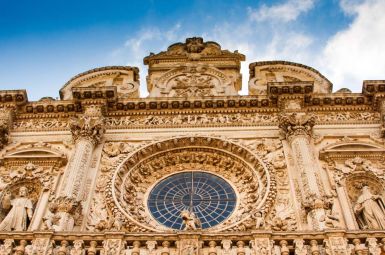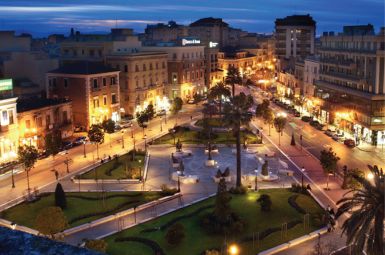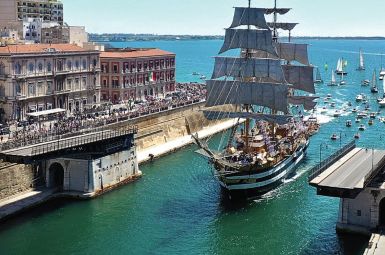
Rocca Imperiale
Il Borgo di Rocca Imperiale
Rocca Imperiale: Dove il Limone d’Oro Bacia il Castello di Federico II
Rocca Imperiale non è semplicemente un borgo, ma la sontuosa porta d’ingresso alla Calabria, un luogo dove la storia sveva, il profumo inebriante degli agrumi e le spiagge Bandiera Blu si fondono in un’esperienza di viaggio unica e indimenticabile. Premiata tra “I Borghi più Belli d’Italia” e insignita della Bandiera Blu, Rocca Imperiale è una destinazione a due facce: il borgo medievale arroccato e la marina cristallina.Il Borgo Verticale e il Castello del Sovrano
L’abitato storico si sviluppa in una spettacolare risalita che culmina con la sua fortezza, una vera e propria sfida alla gravità.- Il Castello Svevo: In cima al borgo troneggia il maestoso Castello Svevo, voluto nel 1225 da Federico II di Svevia per controllare il confine e l’ampia costa ionica. La sua imponente struttura, con torri circolari e un profondo fossato, è un capolavoro di architettura militare federiciana e offre un panorama indimenticabile che spazia dalla montagna al mare.
- La Passeggiata tra le Poesie: L’anima autentica di Rocca Imperiale si svela nei suoi vicoli ripidi e nelle scalinate di pietra. Qui, si respira un’aria di cultura grazie al progetto “Paese della Poesia”: versi di poeti celebri e compositori contemporanei sono affissi sui muri delle case, trasformando il centro storico in una sorprendente galleria letteraria a cielo aperto.
Sua Maestà: Il Limone IGP
Rocca Imperiale è universalmente riconosciuta come la “Città del Limone”, grazie a una gemma agricola che ne definisce l’identità sensoriale.- L’Oro Giallo Rifiorente: Il Limone di Rocca Imperiale IGP è una varietà pregiata, nota come limone rifiorente perché fiorisce almeno quattro volte all’anno. Il suo profumo energico, la buccia sottile e la straordinaria succosità lo rendono un’eccellenza agroalimentare.
- Aroma Diffuso: L’inconfondibile fragranza di zagara pervade l’aria del borgo e delle colline circostanti, creando un’atmosfera quasi magica che accompagna ogni passo del visitatore.
Un’Oasi Tra Cielo e Ionio
Rocca Imperiale unisce il fascino storico alla bellezza del litorale, offrendo una destinazione completa per gli amanti della cultura e del mare.- Bandiera Blu e Lilla: La frazione di Rocca Imperiale Marina vanta un litorale di diversi chilometri di costa, apprezzato per il suo mare cristallino e la qualità dei servizi, un riconoscimento sancito dal conferimento della Bandiera Blu. Il borgo ha anche ottenuto la Bandiera Lilla per l’attenzione al turismo di inclusione.
- Tradizione e Sapori: Qui si assaporano i piatti della tradizione calabrese come i Raskatill ca Millic (cavatelli con mollica di pane) e ci si può immergere nella storia visitando la romanica Chiesa Madre di Santa Maria Assunta o il Monastero dei Frati Osservanti.
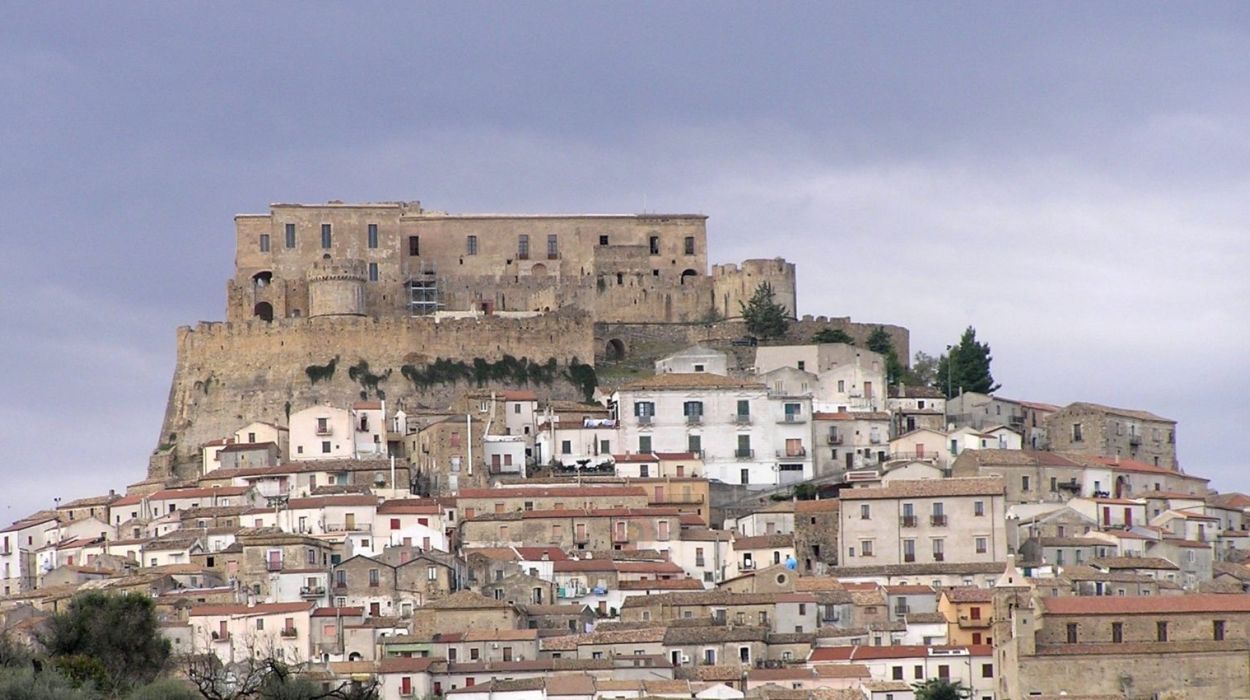
Il Borgo d’Italia
tutto da scoprire ed esplorare
Monumenti
Rocca Imperiale: La Maestosità di Pietra tra Cielo e Agrumi
Rocca Imperiale è una fortezza di bellezza, un borgo monumentale che si erge a baluardo tra l’Appennino e il Mar Ionio. I suoi monumenti sono testimoni di un passato glorioso, dominato dalla figura di Federico II di Svevia, e raccontano l’incontro tra architettura militare, spiritualità e tradizione. Qui, ogni pietra ha una storia.
1. Il Castello Svevo: La Fortezza dell’Imperatore
Il simbolo indiscusso e la ragione stessa della nascita del borgo è il maestoso Castello Svevo, che corona la sommità della collina.
- L’Impronta di Federico II: Voluto e costruito da Federico II di Svevia a partire dal 1225, il castello rispondeva a un’esigenza di difesa e controllo strategico. La sua posizione, a cavallo tra il mare e la montagna, era ideale per dominare i confini settentrionali del Regno di Sicilia.
- Architettura Militare: Nonostante i rimaneggiamenti successivi e i danni subiti, la struttura conserva ancora l’imponenza tipica delle architetture federiciane, con le sue ampie torri circolari e il fossato. Visitare il castello significa ripercorrere saloni che furono di duchi e baroni, godendo di un panorama a 360 gradi che abbraccia il territorio circostante.
2. La Chiesa Madre di Santa Maria Assunta: Un Cuore Romanico
Addentrandosi nel centro storico, si incontra il fulcro della vita spirituale del borgo.
- Stile e Antichità: La Chiesa Madre presenta una struttura di notevole interesse storico, con elementi che richiamano lo stile Romanico. La sua facciata semplice ed elegante è arricchita da un bel rosone e da un campanile che domina i tetti del paese.
- Tesori Nascosti: All’interno, la chiesa custodisce un ricco patrimonio artistico, tra cui spicca un pregevole polittico in legno sull’altare maggiore, testimone della maestria artigianale e della fede secolare della comunità.
3. Il Monastero dei Frati Osservanti: Cultura e Devozione
Lungo la ripida salita verso il castello, si trova un complesso che unisce fede e diffusione della cultura.
- Fede Francescana: Il Monastero dei Frati Minori Osservanti risale al XVI secolo ed è un luogo di profonda quiete e devozione. Nonostante il degrado di alcune sue parti, il complesso è un punto di riferimento storico.
- Spazio Museale: Oggi, l’area monastica ospita il Museo delle Cere, una collezione insolita e affascinante che contribuisce a rendere la visita del borgo un’esperienza ricca di curiosità.
4. La “Poesia Muraria”: Un Monumento Vivente
A Rocca Imperiale, l’arte monumentale non è confinata agli edifici storici, ma si riversa nelle strade.
- La Città della Poesia: Passeggiando nei vicoli, il visitatore scopre un vero e proprio “museo a cielo aperto”. Le pareti delle case sono ornate da stele in maiolica e ceramica che riportano versi di poeti e scrittori di fama nazionale e internazionale.
- Un Monumento Culturale: Questo progetto, unico nel suo genere, rende il borgo stesso un monumento alla letteratura e alla bellezza, aggiungendo un elemento di sorpresa e riflessione a ogni angolo.
Rocca Imperiale è una destinazione dove la grandezza del passato è tangibile, offrendo un percorso che soddisfa sia l’amante dell’architettura che l’appassionato di storie e tradizioni.
Curiosità
Rocca Imperiale: 5 Curiosità che Trasformano il Borgo in Leggenda
Rocca Imperiale non è solo un bellissimo borgo tra i più belli d’Italia: è una terra intrisa di storia sveva, profumi inebrianti e iniziative culturali che la rendono un luogo sorprendentemente unico in Calabria. Preparati a scoprire i segreti e le particolarità che fanno di questa città la “Porta della Calabria”.
1. La “Città della Poesia”: Un Museo a Cielo Aperto
Mentre cammini per i vicoli del centro storico, non alzare lo sguardo solo sulle architetture: concentrati sui muri delle case.
- Versi su Maiolica: Rocca Imperiale ha dato vita a un progetto culturale unico, diventando la “Città della Poesia”. Sui muri delle abitazioni sono incastonate stele in ceramica maiolicata che riportano versi di autori celebri (da classici come Leopardi a contemporanei) e di poeti provenienti da tutto il mondo che hanno partecipato a concorsi letterari locali.
- Un’Esperienza Letteraria: Questo percorso trasforma una semplice passeggiata in un’emozionante lettura itinerante, dove l’arte e la letteratura sono letteralmente parte del paesaggio urbano.
2. Il Limone IGP: Non Fiorisce una Sola Volta
L’economia e l’identità di Rocca Imperiale sono indissolubilmente legate a un agrume che è un vero e proprio miracolo della natura locale.
- Il Rifiorente Speciale: Il celebre Limone di Rocca Imperiale IGP non è un agrume qualsiasi. È una varietà “rifiorente”, il che significa che è in grado di fiorire e produrre frutti almeno quattro volte all’anno (da qui i nomi di frutti come primofiore, bianchetto, verdello).
- Profumo Ovunque: Questa straordinaria produttività fa sì che l’aria del borgo e delle colline circostanti sia perennemente impregnata del profumo intenso della zagara, creando una sensazione olfattiva unica per i visitatori.
3. La Nascita per Volere di un Imperatore
L’origine del borgo non è casuale, ma è legata al volere di uno dei sovrani più potenti del Medioevo.
- Federico II come Padrino: Il paese fu fondato e fortificato per espresso volere di Federico II di Svevia nel 1225. L’imperatore scelse personalmente questa posizione strategica per erigere il maestoso Castello Svevo, in modo da controllare e difendere i confini settentrionali del suo regno.
- Un Baluardo del Regno: La rocca fungeva da sentinella, e la sua imponenza è ancora oggi la testimonianza visiva del dominio e della grandezza di quel periodo storico.
4. Il Castello e l’Assalto Turco Sventato
La fortezza federiciana non fu solo un simbolo, ma un baluardo vitale in momenti cruciali della storia.
- Resistenza Efficace: Nel 1644, il borgo subì un violento e distruttivo attacco da parte dei Turchi Ottomani. Nonostante l’incendio e i danni subiti dall’abitato, il Castello non fu mai conquistato.
- Un Monumento Indomito: Questa resistenza dimostrò l’efficacia difensiva della struttura sveva e il coraggio della popolazione locale nel difendere la propria terra.
5. Una Meta Inclusiva e Pluripremiata
Rocca Imperiale non eccelle solo nella bellezza storica, ma anche nell’attenzione verso il futuro e l’accoglienza.
- Non solo Bandiera Blu: Oltre al prestigioso vessillo della Bandiera Blu per il suo mare cristallino, il borgo ha ottenuto anche la Bandiera Lilla, un riconoscimento che premia i comuni attenti al turismo accessibile e all’inclusione delle persone con disabilità.
- Bellezza a 360 Gradi: Questo duplice riconoscimento dimostra l’impegno della città nel coniugare la conservazione del suo patrimonio con un’ospitalità moderna e consapevole.
Personaggi
Rocca Imperiale: Le Personalità che Hanno Oltrepassato i Confini del Borgo
Rocca Imperiale, fortezza federiciana e custode dei profumi del Limone IGP, non ha solo plasmato paesaggi, ma anche talenti. Sebbene la sua fama sia principalmente legata alla storia del Castello Svevo e all’agricoltura di pregio, il borgo ha dato i natali a figure che, seppur meno note al grande pubblico internazionale, hanno lasciato un segno nel campo della cultura, della scienza e del servizio pubblico.
1. Ludovico Nicola di Giura: Il Ponte Tra Oriente e Occidente
Una delle figure più affascinanti e cosmopolite nate a Rocca Imperiale è legata a una straordinaria avventura intellettuale.
- Il Traduttore del Cinese: Ludovico Nicola di Giura (1868-1947) fu un medico della Regia Marina italiana che, allontanandosi dal suo borgo natale, visse per oltre trent’anni in Cina. La sua vera impresa non fu medica, ma letteraria: si dedicò con passione allo studio e alla traduzione del “Liaozhai zhiyi” (o Racconti Straordinari dello Studio Liao), una delle più importanti raccolte di racconti fantastici e di folclore della letteratura cinese.
- Un Pioniere: Di Giura fu probabilmente il primo studioso al mondo a completare una traduzione integrale di quest’opera, sebbene la sua versione italiana sia stata pubblicata postuma. La sua vita testimonia come un nativo di un piccolo borgo calabrese potesse diventare un pioniere nella diffusione della cultura orientale in Italia.
2. La Contesa di San Tommaso d’Aquino (Leggenda e Storia Locale)
Una suggestiva (ma controversa) tradizione locale lega Rocca Imperiale al più grande filosofo della Chiesa.
- Il Richiamo di Pitagora: Sebbene sia storicamente accettato che San Tommaso d’Aquino sia nato nel Lazio, alcune antiche tesi storiche e cronache calabresi lo annoveravano tra i Santi nati nella regione. La tradizione locale di Rocca Imperiale, in particolare, si legava a un passo dello stesso Tommaso in cui definiva Pitagora suo conterraneus (compatriota). Poiché Pitagora visse a Metaponto, non lontano da Rocca Imperiale (allora parte della Calabria Ulteriore), alcuni studiosi locali hanno ipotizzato, seppur senza seguito storiografico, un legame con la zona del Pollino.
- Il Senso del Luogo: Pur restando una suggestione non confermata, questa leggenda sottolinea l’orgoglio storico del territorio e il desiderio di legarsi a figure di risonanza universale, riflettendo l’importanza che la zona della Sibaritide ebbe ai tempi della Magna Grecia.
Rocca Imperiale, quindi, contribuisce al patrimonio italiano non solo attraverso la sua inestimabile architettura federiciana e i prodotti di qualità, ma anche attraverso le storie di uomini che, come Ludovico Nicola di Giura, hanno saputo portare il nome della Calabria in giro per il mondo.
Ricette Tipiche
Rocca Imperiale in Tavola: I Sapori Autentici del Borgo dei Limoni
La cucina di Rocca Imperiale è un ponte tra la semplicità contadina del Pollino e la generosità del Mar Ionio, ma soprattutto è una celebrazione dell’eccellenza locale: il Limone IGP. Qui, i sapori sono diretti, intensi e profondamente legati alla tradizione. Preparati ad assaporare l’essenza della “Porta della Calabria”.
I Primi: Il Trionfo della Pasta Fatta in Casa
A Rocca Imperiale, come in gran parte della Calabria, la pasta fresca è la regina della tavola e si sposa con i sughi robusti della pastorizia.
1. Raskatill ca Millic (Cavatelli con Mollica)
Il piatto della festa e della tradizione, che celebra ingredienti poveri ma carichi di sapore.
- La Pasta: I Raskatill sono cavatelli rustici, ottenuti “raschiando” l’impasto con un dito o un ferretto. La loro forma incavata è perfetta per raccogliere il condimento.
- Il Condimento: L’abbinamento tipico è con la mollica di pane raffermo (o pane tostato), saltata in padella con abbondante olio extra vergine d’oliva, aglio, e generose dosi di peperoncino piccante. La mollica assorbe l’olio e il piccante, creando un sugo croccante e saporitissimo che bilancia la morbidezza della pasta.
2. Lagane e Ceci
Un piatto che parla di sussistenza contadina, ma che nell’equilibrio dei sapori raggiunge l’eccellenza.
- Il Contrasto Perfetto: Le lagane (simili a tagliatelle larghe e spesse) vengono immerse in una zuppa densa di ceci locali.
- Aromi Profondi: L’intensità del piatto è data dall’uso sapiente di aglio, rosmarino o alloro, e un filo d’olio rigorosamente a crudo dopo la cottura. È il sapore della terra, rinvigorito, a volte, da un tocco di cotiche di maiale per la versione più ricca.
I Sapori Forti: Carne e Street Food
La cucina rocchese non teme i sapori decisi, tipici dell’entroterra calabrese.
3. I Ptticill (Panzerotti Fritti)
Lo street food salato per eccellenza, simbolo delle sagre e dei momenti conviviali.
- La Preparazione: Sono piccoli panzerotti di pasta lievitata, fritti fino a doratura e ripieni con ingredienti semplici ma intensi.
- I Ripieni Tradizionali: Il ripieno più classico è a base di ricotta salata o schianta (un formaggio fresco) mescolata a cicorie o erbe spontanee di campo, spesso insaporite con peperoncino. Un’esplosione di gusto fritto che racchiude l’anima del borgo.
La Pasticceria: L’Omaggio al Limone IGP
È nei dolci che il Limone di Rocca Imperiale IGP manifesta tutta la sua fragranza, trasformando la pasticceria tradizionale.
4. Il Dolce al Limone di Rocca Imperiale
Sebbene non esista un unico dolce storico, l’uso del limone locale è la vera tradizione in pasticceria.
- L’Essenza Agrumata: Che sia una torta, un babà o una pasta frolla, la firma di Rocca Imperiale è la presenza della scorza grattugiata e del succo del suo pregiato limone rifiorente. Questo ingrediente dona una nota aromatica ineguagliabile e un’acidità bilanciata.
- Biscotti e Zagara: Molto amati sono i biscotti secchi alle mandorle o gli ‘ncartiḍḍati (dolci natalizi), spesso profumati con l’essenza della zagara o bagnati in sciroppi leggeri a base di limone. Un finale di pasticceria che è un vero e proprio inno olfattivo.
Sei pronto a sederti a tavola e a lasciarti conquistare dal profumo inebriante che Rocca Imperiale ha da offrire?
